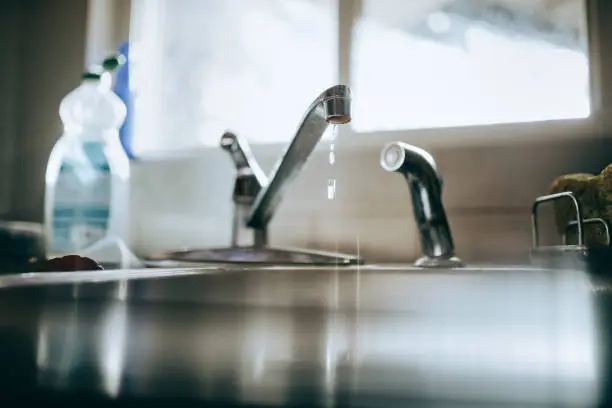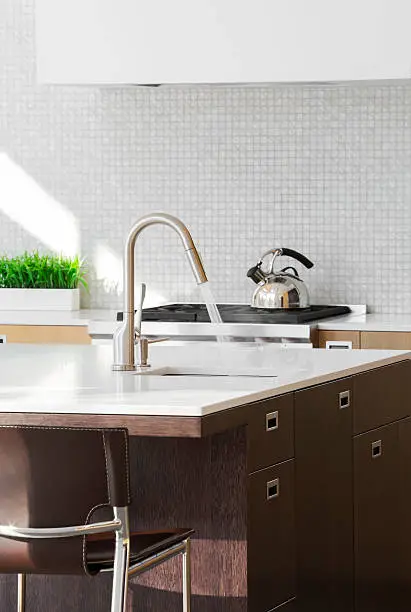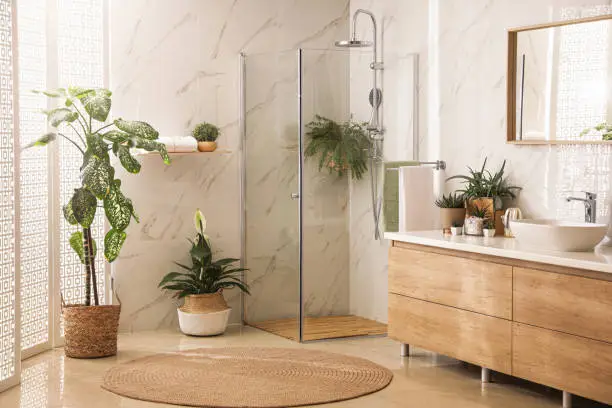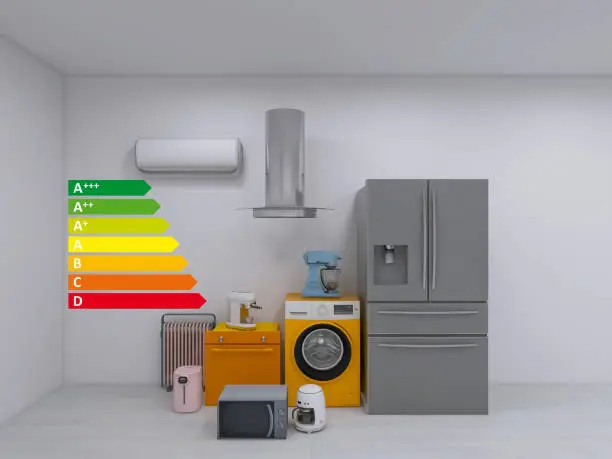In sustainable architecture, water efficiency remodel is one of the basic aspects of green kitchen and bathroom design. When it comes to doing a kitchen remodel or a bathroom remodel, a strategy-driven set of improvements by the experienced remodel contractors can reduce the cost of utilities and water use, increase long-term value and do so without compromising either style or comfort.
Why Water Conservation Should Be a Remodeling Priority

The Impact of Water Waste on Utility Bills and the Environment
The usage of water in kitchens and bathrooms makes up a significant portion of water used in the house. Traditional fixtures tend to allow the wastage of hundreds of gallons per month, which increases utility costs, as well as municipal water supplies. However, through remodeling which involves efficiency, households will be able to reduce wastage and make a significant contribution to the ecology. Minor changes can be made like changing a faucet to create a high savings in the long run.
Regulatory Changes Encouraging Low-Flow Fixtures
Modern building codes are promoting water efficient standards more and more. The local governments have since required the use of low-flow toilets, aerated faucets, low-flow appliances in the construction of new buildings as well as the remodeling of existing ones. These steps are an indication of the increased awareness of the problem of water shortages and the guidance of homeowners to make smarter fixture decisions. The decisions based on these regulations guarantee not only compliance with the current legal framework but also guarantee future-proof value of the property.
Water-Saving Fixtures for a Kitchen Remodel

Touchless Faucets and Aerators That Reduce Consumption
Motion-detecting faucets are a practical solution to reducing the amount of wasted water, especially in the family kitchen. These fixtures go off automatically when not in use therefore automatically detecting a movement in a predetermined field of vision thus avoiding over usage. These technologies, in combination with faucet aerators, which limit the flow, but not the water pressure, can reduce the consumption using the kitchen sink by up to 50%. The devices now come in a range of aesthetic choices: sleek, modern finishes to classic colors, making them fit well within the majority of kitchen design styles.
High-Efficiency Dishwashers and Smart Plumbing Design
The technology of dishwashers has been significantly evolved over the past years. ENERGY STAR-certified models use advanced spray systems and soil-sensing devices to provide high-performance cleaning without using as much water. Energy and water efficiencies are further increased when these appliances are combined with plumbing layouts that reduce the distance between the water heater and the fixtures such as those recommended often by remodel contractors.
Table: Traditional vs. Water-Efficient Kitchen Fixtures
| Feature | Traditional Fixture | Water-Efficient Upgrade | Estimated Annual Savings |
|---|---|---|---|
| Kitchen Faucet | 2.2 GPM | 1.5 GPM Aerated Touchless Faucet | 700+ gallons |
| Dishwasher | 10–15 gallons/load | 4–6 gallons/load (ENERGY STAR®) | 3,000+ gallons |
| Hot Water Plumbing Layout | Long piping routes | Compact, direct lines | Faster hot water delivery |
Eco-Conscious Bathroom Renovation Ideas

Low-Flow Toilets and Showerheads That Don’t Sacrifice Performance
Modern low-flow toilets use a maximum of 1.28 gallons per flush, a considerable reduction in the amount of water used as compared to ancient models which used up to 5 gallons on a regular basis. Dual-flush systems also increase the savings factor by enabling users to choose the most suitable amount on a case-to-case basis, thus saving an even greater volume. Similar advantages are achieved by using high-efficiency showerheads, that provide acceptable pressure and save up to 30 percent of water consumption. These fixtures have been comprehensively tested to prove their comfort and durability, which makes them a truly no-compromise solution to modern bathroom redesigns.
Greywater Recycling Systems for Responsible Use
Greywater systems recycle lightly used water that can be utilized in flushing toilets and landscape irrigation. These systems produce significant volumes of water savings despite the extra plumbing job which is usually necessary during the installation process. They will especially be beneficial to households that want to achieve LEED certification or those that are located in the drought-prone areas. More and more bathroom remodel contractors currently include greywater systems to their repertoire of sustainable renovations.
Planning a Remodel with Water Efficiency in Mind

Choosing the Right Bathroom Remodel Contractors with Green Building Experience
Not all contractors are experts in sustainable remodeling. Remodelers to be ought to select contractors that are knowledgeable in green construction or are LEED or NAHB Green certified. These experts know how to combine low-VOC products, optimal plumbing systems, and eco-friendly appliances. They are also able to offer guidance on permits, rebates and code compliance of water efficiency installations.
Balancing Function, Design, and Sustainability Goals
A high level of visual quality is not a tradeoff required of water efficiency design. One can even imagine and create a bathroom that feels like a spa or a kitchen that looks like a fine cuisine kitchen and still have achieved goals of saving water. The wise move is to incorporate sustainable fixings and materials into the original design plan and thereby avoiding the possibility of the potential discomfort of last-minute decisions or the expensive changes during the time of renovation proceedings.
Bullet Points: Tips for a Water-Efficient Design Plan
-
Prioritize water efficiency fixtures early in the design phase.
-
Use tile and materials that resist mold and humidity buildup.
-
Consult contractors with experience in green remodeling.
-
Look into local utility rebates and tax incentives.
-
Don’t forget about ventilation—air quality plays a role in humidity control.
Long-Term Savings from Water-Smart Remodeling

ROI on High-Efficiency Fixtures and Appliances
As much as some water efficiency upgrades require a higher initial investment, they always pay their worth back. The main benefits are lower water bills, long-life appliances and increased resale value. Homes with ecofriendly kitchen and bathroom are often sold faster in competitive markets. Taken together, these advantages, along with environmental confidence, make water efficiency remodeling a fiscally sound long-term investment.
Rebates and Incentives for Eco-Friendly Renovations
In many jurisdictions and in the utility industry, there are rebates on installing certified water-efficiency products. The incentive value can differ, but grants can be between $50 and a few hundred dollars depending on the type of appliance or fixture. The upgrades can take a toll financially, yet remodeling specialists who are familiar with the programs can support applicants. These incentives increase the availability of sustainable remodeling to all homeowners with various budgets.
Frequently Asked Questions (FAQs)
1. What is the most effective water-saving upgrades during a remodel?
Low-flow toilets, aerated faucets, and high-efficiency dishwashers are among the most effective ones to reduce household water use. Touchless kitchen faucets and greywater systems are no less beneficial. The combination of these fixtures and appliances brings not only a preference of practicality but also sustainability in kitchens and bathrooms. The choice of water efficiency additions is one of the simplest, but also significant ways of reducing the long-term costs of the utilities.
2. Will water-efficient fixtures affect performance or comfort?
The current water efficiency fixtures are designed in a way that they provide the same performance, and in some cases, even better performance than their traditional counterparts. Examples include the shower heads that offer a high-pressure experience but consume less amount of water. Aerated faucets have a robust flow at a low volume. The general comfort and convenience of these improvements have been increasing significantly in the past few years. The majority of users fail to notice any negative aspect, except the reduced water bills.
3. Are there tax benefits or rebates for eco-friendly renovations?
It is true indeed that a lot of areas are offering rebates in the form of water utilities and conservation programs run by the state. Additionally, some of the improvements can receive federal energy efficiency incentives, especially in combination with ENERGY STAR R appliances. In order to make sure that the standards of these programs are fulfilled, it is necessary to cooperate with experienced remodel contractors. When remodeling, homeowners must ask about rebates on the selection of water efficiency products.
4. How do I find contractors familiar with water-efficient remodeling?
A customer looking to hire remodel contractors ought to ask whether sustainability is provided as a service or clearly mentioned as a feature and find out certifications supporting these statements. Questions about previous encounters with low-flow fixtures, energy-efficient appliances, and greywater systems are necessary. Also, the portfolio and testimonials review are to make sure that the contractor has the necessary experience by mentioning eco-conscious kitchens and bathrooms. This will guarantee that the remodeling project is done correctly with good decisions taken and uneconomical inefficiencies evaded when an experienced professional is hired.
5. Can I retrofit my current kitchen and bathroom without a full remodel?
Making significantly water efficiency changes is not at all impossible without redesigning a whole built environment. Substantive gains can be achieved through any number of shortened, but decisive, interventions. Replacing traditional fixtures with low-flow ones, installing touchless faucets, and replacing appliances are all simple and rather efficient steps to take. In some cases, redesigning of existing plumbing systems to improve the efficiency of flow and insulation further increases the savings. Even though a comprehensive remodel will yield the most extensive results, wisely chosen interventions will produce quantifiable differences.
KBR Kitchen and Bath provides water efficiency kitchen and bathroom remodeling services that embody your style and philosophy in case you are thinking of renovating your home to make it more efficient and sustainable. Our experienced reconstruction professionals are prepared to help you regardless of whether your project entails a full-scale remodeling or smaller but important adjustments. Come to one of our showrooms in Fairfax, Bethesda (Kitchen), Bethesda (Bathroom), or Manassas to view our work and talk about your own goals or call us in order to begin the process of remodeling immediately.

